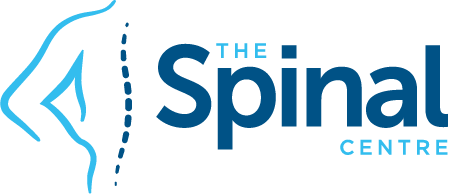
Osteoporosis
 2.2 million Australians are affected by osteoporosis, indeed it is one of the world’s most common chronic diseases.
2.2 million Australians are affected by osteoporosis, indeed it is one of the world’s most common chronic diseases.
Worldwide, osteoporosis causes more than 8.9 million fractures annually, resulting in an osteoporotic fracture every 3 seconds. In Australia alone, the costs relating to osteoporosis are $7.4 billion per year. Of this, $1.9 billion are direct costs.
“Vertebral fractures due to osteoporosis are common – with one occurring every 22 seconds worldwide in men and women over age 50. Vertebral fractures can lead to back pain, loss of height, deformity, immobility, increased number of bed days, and even reduced pulmonary function.” – International Osteoporosis Foundation.
The International Osteoporosis Foundation examines some of the causes behind osteoporosis, and offers several suggestions for people of all ages on how to avoid the condition later in life.
Risk Factors for Osteoporosis
- Physical inactivity and a sedentary lifestyle
- Impaired neuromuscular function (for example, reduced muscle strength)
- Smoking
- High intake of alcohol
- Prolonged use of corticosteroids
- Low body weight
Prevention of Osteoporosis
Children
Bone mass can be significantly improved through exercise for children and adolescence. In connection with exercise, children should be consuming adequate amounts of calcium in their diet through dairy-enriched foods or through supplementation. Click here for more information.
Adults
Having an active lifestyle is extremely beneficial to improve bone density and reduce the risk of bone fracture. Higher levels of leisure time, sport activity, and household chores and fewer hours of sitting daily were associated with a significantly reduced relative risk for hip fracture.
A study conducted found that higher dietary protein intake is associated with a lower rate of age-related bone loss. In addition to this, bone density in adults can be supported through the consumption of fruit and vegetables.
Post Menopausal Women
In white women, the lifetime risk of hip fracture is 1 in 6, compared with a 1 in 9 risk of a diagnosis of breast cancer.
A study was conducted on postmenopausal women who used small weights to strengthen their back muscles for approximately two years. At a 10-year follow-up, women who exercised had stronger back muscles than those who did not exercise. Perhaps most importantly, they had reduced the chance of getting a fracture by approximately 300 percent.
Elderly
Exercise also greatly reduces the risk of falls in the elderly, an important statistic considering that each year, approximately 40 percent of people over 65 suffer at least one fall. Individually tailored exercise programs and group exercises such as Tai Chi appear to be the most effective in reducing the incidence of falls and fall-related injuries. The elderly should eat a nutrient dense diet as poor nutritional status can slow recovery from falls, and increase susceptibility to fractures.
Dr. Hooper Comment:
I strongly recommend the benefits of regular exercise, and I am not talking about walking around the home or lifting some timber on a work site. You have to be more proactive than that! The body quickly adapts to the stresses we put on it each day. So even if you are quite active you need to look at new ways to challenge yourself with regard to physical activity.
If you are considering an exercise program be sure to do it in conjuction with Chiropractic Care. When you drive a car with a wheel alignment problem you chew out the tyres. If you are exercising without regular Chiropractic Care you will more than likely “chew out” the discs in your lower back (spinal decay) or develop issues in the hips or knees.
Of course diet and exercise go hand in hand, so you need to consider your Nutrition to get the maximum benefit from your execise to prevent Osteoporotic changes.
References
Chan K, Qin L, Lau M, et al. (2004) A randomized, prospective study of the effects of Tai Chi Chun exercise on bone mineral density in postmenopausal women. Arch Phys Med Rehabil 85:717.
Dargent-Molina P, Favier F, Grandjean H, et al. (1996) Fall-related factors and risk of hip fracture: the EPIDOS prospective study. Lancet 348:145.
Feskanich D, Willett W, Colditz G (2002) Walking and leisure-time activity and risk of hip fracture in postmenopausal women. JAMA 288:2300.
Gregg EW, Cauley JA, Seeley DG, et al. (1998) Physical activity and osteoporotic fracture risk in older women. Study of Osteoporotic Fractures Research Group. Ann Intern Med 129:81.
International Osteoporosis Foundation (2017) Facts and Statistics. Retrieved from https://www.iofbonehealth.org/facts-statistics#category-21.
Kemmler W, Lauber D, Weineck J, et al. (2004) Benefits of 2 years of intense exercise on bone density, physical fitness, and blood lipids in early postmenopausal osteopenic women: results of the Erlangen Fitness Osteoporosis Prevention Study (EFOPS). Arch Intern Med 164:1084.
New SA (2004) Do vegetarians have a normal bone mass? Osteoporos Int 15:679.
Nguyen TV and Eisman JA (1999) Risk factors for low bone mass in elderly men. In: ES Orwoll (ed) Osteoporosis in Men. Academic Press, San Diego, p 335.
Sambrook PN, Seeman E, Phillips SR, Ebeling PR (2002) Preventing osteoporosis: outcomes of the Australian Fracture Prevention Summit. Med J Aust 176 Suppl:S1.
International Osteoporosis Foundation (2017) Facts and Statistics. Accessed https://www.iofbonehealth.org/facts-statistics#category-21.

Are You Being Conned By Caltrate?
If you go to your Doctor and they happen to prescribe you with a Calcium supplement, it is likely that they will recommend the popular pharmacy brand ‘Caltrate’.
So, does this Calcium supplement stack up? Is it worth the money that droves of Australians spend to increase their calcium levels, protect their bones, and prevent disease?
The research points to no. Studies show there are MUCH better forms of calcium out there.





